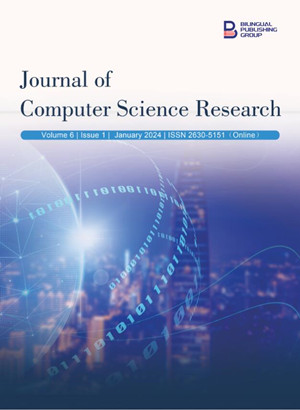
On Enforcing Dyadic-type Homogeneous Binary Function Product Constraints in MatBase
DOI:
https://doi.org/10.30564/jcsr.v6i1.6227Abstract
Homogeneous binary function products are often encountered in the sub-universes modeled by databases, from genealogical trees to sports, from education to healthcare, etc. Their properties must be discovered and enforced by the software applications managing such data to guarantee plausibility. The (Elementary) Mathematical Data Model provides 17 dyadic-type homogeneous binary function product constraint types. MatBase, an intelligent data and knowledge base management system prototype, allows database designers to simply declare them by only clicking corresponding checkboxes and automatically generates code for enforcing them. This paper describes the algorithms that MatBase uses for enforcing all these 17 homogeneous binary function product constraint types, which may also be used by developers not having access to MatBase.
Keywords:
Database constraints; Homogeneous binary function products; Dyadic relations; Modelling as programming; The (Elementary) Mathematical Data Model; MatBaseReferences
[1] Mancas, C., 2015. Conceptual data modeling and database design: A completely algorithmic approach, Volume I: The shortest advisable path. Apple Academic Press: Palm Bay.
[2] Mancas, C., 2018. MatBase constraint sets coherence and minimality enforcement algorithms. Advances in databases and information systems. Springer: Cham. pp. 263–277.
[3] Mancas, C., 2019. Matbase autofunction non-relational constraints enforcement algorithms. International Journal of Computer Science & Information Technology. 11(5), 63–76.
[4] Mancas, C., 2024. Conceptual data modeling and database design: A completely algorithmic approach. Volume II: Refinements for an expert path. Apple Academic Press: Palm Bay.
[5] O' Leary, M.L., 2016. A first course in mathematical logic and set theory. John Wiley & Sons: Hoboken.
[6] Mancas, C., 2002. On knowledge representation using an elementary mathematical data model. Information and knowledge sharing (IKS 2002). ACTA Press: Calgary. pp. 206–211.
[7] Mancas, C., 2020. On detecting and enforcing the non-relational constraints associa ted to dyadic relations in MatBase. Journal of Electronic & Information Systems. 2(2), 1–8.
[8] Mancas, C., 2023. On enforcing dyadic relationship constraints in MatBase. World Journal of Advanced Engineering Technology & Sciences. 9(2), 298–311. DOI: https://doi.org/10.30574/wjaets.2023.9.2.0211
[9] Mancas, C., 2019. MatBase—A tool for transparent programming while modeling data at conceptual levels. CSITEC 2019—5th International Conference on Computer Science, Information Technology; 2019 Aug 24–25; Chennai, India. DOI: https://doi.org/10.5121/csit.2019.91102
[10] Mancas, C., 2020. On modelware as the 5th generation of programming languages. Acta Scientific Computer Sciences. 2(9), 24–26.
[11] Chen, P.P.S., 1976. The entity-relationship model—Toward a unified view of data. ACM Transactions on Database Systems. 1(1), 9–36. DOI: https://doi.org/10.1145/320434.320440
[12] Thalheim, B., 2000. Entity-relationship modeling: Foundations of database technology. Springer-Verlag: Berlin.
[13] Codd, E.F., 1970. A relational model for large shared data banks. Communications of the ACM. 13(6), 377–387. DOI: https://doi.org/10.1145/362384.362685
[14] Abiteboul, S., Hull, R., Vianu, V., 1995. Foundations of databases. Addison-Wesley: Reading, MA.
[15] Maier, D., Warren, D.S., 1988. Computing with logic: Logic programming with Prolog. Benjamin/Cummings: Menlo Park, CA.
[16] The Future: Modelling as Programming. Model-based Development, Modelling as Programming Case Studies [Internet]. [cited 2023 Dec 5]. Available from: https://www.youtube.com/watch?v=tww7LuVzYco&feature=youtu.be
[17] Von Halle, B., 2001. Business rules applied: Building better systems using the business rules approach. John Wiley & Sons: New York, NY.
[18] Morgan, T., 2002. Business rules and information systems: Aligning IT with business goals. Addison-Wesley Professional: Boston, MA.
[19] Classification and Representation of Business Rules [Internet]. Available from: https://www.researchgate.net/publication/251521215_Classification_and_Representation_of_ Business_Rules
[20] Ross, R.G., 2003. Principles of the business rule approach. Addison-Wesley Professional: Boston, MA.
[21] Halle von, B., Goldberg, L., 2006. The business rule revolution: Running businesses the right way. Happy About: Cupertino, CA.
[22] Taylor, J., 2019. Decision management systems: A practical guide to using business rules and predictive analytics. IBM Press: Indianapolis, IN.
[23] Systems of Insights for Digital Transformation. Using IBM Operational Decision Manager Advanced and Predictive Analytics [internet]. Redbooks. [cited 2024 Feb 26]. Available from: https://www.redbooks.ibm.com/redbooks/pdfs/sg248293.pdf
[24] Scaling BPM Adoption from Project to Program with IBM Business Process Manager [Internet]. Redbooks. [cited 2023 Dec 5]. Available from: http://www.redbooks.ibm.com/redbooks/pdfs/sg247973.pdf
[25] Red Hat Decision Manager [Internet]. Red Hat, Inc. [cited 2024 Feb 26]. Available from: https://access.redhat.com/products/red-hat-decision-manager
[26] Standard System Documentation [Internet]. Agiloft Inc. [cited 2023 Dec 5]. Available from: https://wiki.agiloft.com/display/SD/Documentation+Archive?preview=/31199110/43450819/standard-kb-documentation.pdf
[27] Mancas, C., 2022. On computing transitive closures in MatBase. GSC Advanced Engineering and Technology. 4(1), 39–58. DOI: https://doi.org/10.30574/gscaet.2022.4.1.0050
[28] Simple Laws about Nonprominent Properties of Binary Relations [Internet]. [cited 2023 Dec 5]. Available from: https://arxiv.org/pdf/1806.05036v2.pdf
Downloads
How to Cite
Issue
Article Type
License
Copyright © 2024 Author(s)

This is an open access article under the Creative Commons Attribution-NonCommercial 4.0 International (CC BY-NC 4.0) License.




 Christian Mancas
Christian Mancas





